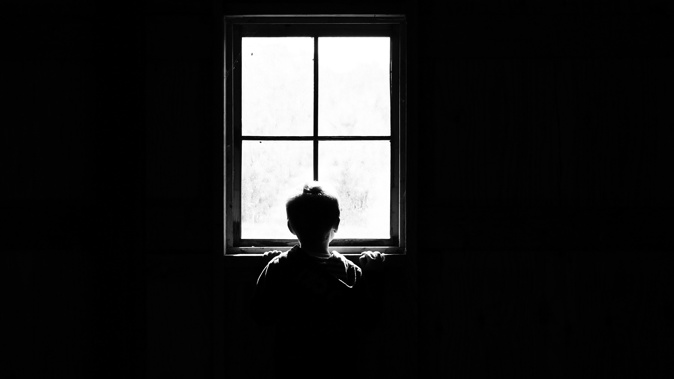
Abuse in New Zealand institutions is more significant than first thought and continues to the present day, a Royal Commission of Inquiry has concluded in its first report.
The report, Tawharautia: Purongo a te Wa, details the findings from private and public hearings held so far in the five-year inquiry, which began in 2018 under the Coalition Government and covers the period between 1950 and 1999.
In all, 1900 survivors and 350 witnesses are taking part, along with state institutions such as the Ministry of Social Development and Ministry of Education, and faith-based institutions like churches and religious schools.
The interim report describes unrelenting misery for victims of abuse in state institutions, detailing how they were often worse-off in care despite coming from broken homes.
Abuse was rife, complaints processes were non-existent or inadequate, and abusers were rarely held to account, often being moved to another institution without punishment or having their crimes covered up by senior officials.
The state's redress process was also described as unsatisfactory, and almost solely focused on controlling costs while aggressively defending itself in court or creating convoluted out-of-court processes and offering meagre compensation.
Public Service Minister Chris Hipkins said it was a deeply moving record of the state's past failings.
"I welcome this interim report, and I acknowledge the courage and determination of survivors who relived their painful experiences with the Royal Commission," he said in a statement.
"The report is a difficult read, and shows the enormity of abuse and trauma that has occurred. The hurt and anguish that has been caused in New Zealand's history is inexcusable."
The interim report does not include any recommendations. But the Government said it was already considering two changes in areas which had concerned survivors - a centralised claims process and reform of the Limitations Act.
"Survivors have told us they find it difficult to navigate the different redress processes operated by State agencies, and we are exploring whether a single entry-point is possible for historic claims.
"The Limitation Act, which sets time limits on recognising civil claims against the State, has been used to deny claims in Court, and we are already looking into how the Act might be applied in future for historic abuse claims."
There is no statute of limitations for reporting abuse in New Zealand, but there is a six-year cut-off for civil claims against the state - such as for negligence.
Hipkins said it was important to note changes already made since 2000, including improved vetting, training and oversight of staff and caregivers.
Among the key findings in the commission's interim report was that the extent of abuse in care was significant, possibly more than first realised.
According to a commissioned report, an estimated 655,000 people went into care between 1950 and 1999 and up to 250,000 may have been abused - though the commission noted that there were large gaps and deficiencies in the data and this was a rough estimate.
"But this work indicates that even on conservative estimates, there has been more abuse than previously thought. It is likely these figures are an underestimate of the problem. Another point to stress is that this abuse in care continues to this day."
The survivors came from all backgrounds and walks of life, but many came from the most vulnerable parts of society - Maori and Pacific families, disabled people, women and girls, and poor households.
Many were removed because they lived in unsafe homes but ended up worse off in care.
Maori were over-represented in referrals from criminal courts and social welfare, and this could partly be attributed to discriminatory attitudes by officials and police.
The most common forms of abuse were physical and sexual abuse, and survivors also spoke of unreasonable physical restraint; cruel, inhuman and degrading treatment; use of medical procedures such as electro-shock therapy as punishment; unjustified solitary confinement; improper strip searches and vaginal examinations; and verbal abuse and racist slurs.
Maori and Pacific survivors in particular reported cultural neglect, which made it difficult for them to have any sense of identity or reconnect with whanau. Pacific people in care in particular were encouraged to abandon their Pacific identity.
The commission identified some common factors in abuse cases, including a lack of vetting, training and oversight of care workers, absence of clear processes for making complaints about abuse, and a failure to respond to disclosures about abuse adequately.
There were huge barriers to challenge authority, and perpetrators were rarely punished.
"Sometimes victims were punished for reporting abuse or placed back in abusive families or settings after their disclosure," the report said.
"We heard about active attempts to cover up abuse and/or transfer the abuser or abusers after victims made allegations."
The state's redress processes were "overly focused on the financial implications to the state" rather than on providing satisfactory compensation to survivors.
The Crown "vigorously defended" claims in court and government agencies developed alternative, out-of-court claims processes which survivors described as protracted, opaque, and full of hurdles.
The settlements offered to survivors were inconsistent and too low. Analysis by the commission found that the estimated cost to survivors of abuse was around $910,000 per person, but many were offered less than a tenth of that amount.
Survivors were often disbelieved, made to tell their stories again and again, and were re-traumatised. Many were never aware they could even make a claim.
The report said its next focus would be on youth justice facilities, schools and foster care.
A second report summarised findings from 50 victims' accounts and identified common themes.
It said nearly all survivors were moved repeatedly between homes and institutions, some more than ten times. Half of them also had a sibling placed in care.
Abuse was most common when the victims were aged between five and 17, although it ranged up to 20 years old. Most survivors were abused for periods between five and 10 years. For most of them, the impact on their behaviour and mental health was lifelong.
Take your Radio, Podcasts and Music with you









